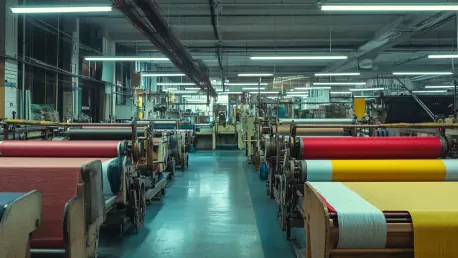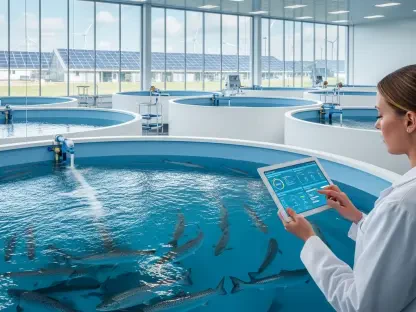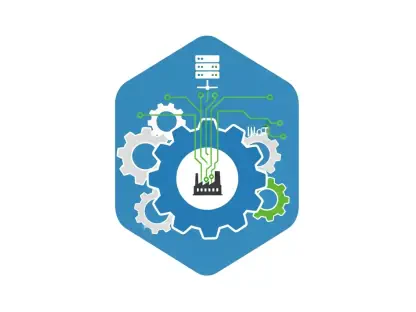The UK manufacturing sector, particularly the textile industry, is at a critical juncture as it navigates through its first negative output figures in four years. The Q3 Manufacturing Outlook survey by Make UK and BDO, which gathered responses from 307 companies, offers a comprehensive analysis of the current state and future projections of the industry. The findings underscore a sector experiencing significant challenges, including a contraction in domestic market demand. However, it also points to pockets of resilience and optimism that may provide a foundation for future growth.
Economic Growth and Manufacturing Output
The recent survey results highlight that UK manufacturing output has turned negative for the first time in four years, primarily due to a downturn in domestic market demand. This contraction has certainly put the sector on alert, as domestic orders have plummeted and overall industry output recorded a balance decline from +9% in Q2 to -2%. Yet, there is a silver lining for the manufacturing community: export markets have exhibited greater resilience, suggesting potential pathways for recovery. Despite the immediate challenges, nearly 58% of surveyed companies express optimism, believing that recent governmental changes will spur economic growth. This sense of cautious optimism among business leaders is vital as it can steer strategic decisions and investment in the right direction.
Moreover, looking ahead, there is hope for a rebound in output with projections indicating a resurgence to +33% in the coming quarter. Such an expectation reflects the sector’s intrinsic potential and resilience. Business confidence remains surprisingly high despite present difficulties, with many firms betting on the stabilizing effects of political consistency to drive an economic upturn. This sentiment is further buoyed by the belief in the manufacturing sector’s ability to leverage export markets to counterbalance domestic market weaknesses. This dual outlook of recognizing present hardships while remaining optimistic about future possibilities is crucial for sustaining morale and strategic planning within the sector.
GDP and Economic Forecasts
Make UK has tempered its forecast for manufacturing growth in 2024, revising it downward from an earlier projection of 1.2% to a more modest 0.5%. This downgrade reflects the sector’s acknowledgment of the challenging conditions that persist. Nonetheless, the overall GDP growth forecast for the UK stands at 1.1% for the current year, with an optimistic projection of 1.8% for 2025. The improved long-term economic outlook is attributed to adjustments in data by the Office of National Statistics, which provide a more accurate and positive picture of future economic performance.
These adjustments have injected a much-needed boost for business sentiment. However, the sector must navigate through its current trials before reaping the benefits of a potentially stronger economy. The cautious optimism shown by manufacturers reflects a careful balance between acknowledging present difficulties and remaining hopeful about future possibilities. As companies strive to balance short-term challenges with long-term ambitions, this guarded optimism becomes a crucial component of their strategic planning and operational execution.
Struggles in the Textile Industry
Among the various sub-sectors of UK manufacturing, the textile industry is currently grappling with some of the steepest declines. The survey projects a 7.7% drop in textile output for 2024, which is expected to be followed by a further decline of 2.9% in 2025. These figures not only highlight the significant challenges faced by this industry segment but also serve as a microcosm of the broader economic struggles impacting manufacturing. The textile sector’s problems are emblematic of broader issues such as shifts in consumer behavior, skyrocketing costs, and fierce global competition.
Addressing these challenges will require a multi-faceted approach involving strategic innovation and robust policy support. Despite these daunting projections, there remains a glimmer of hope for the textile industry. By investing in sustainable practices and advanced manufacturing technologies, the sector could pave a new pathway to reinvigorate growth and competitiveness. This spirit of adaptation and innovation, coupled with targeted policy interventions, can help the textile industry navigate through these turbulent times and emerge stronger on the other side.
Business Confidence and Optimism
Interestingly, despite the immediate economic hardships, business confidence has soared to its highest level since the Q3 survey began in 2014. This heightened sentiment is reminiscent of the post-COVID-19 recovery phase, where optimism was palpable despite prevailing uncertainties. Nearly 58% of companies surveyed are hopeful that recent governmental changes will foster better economic growth over the next 12 months. This optimism plays a pivotal role in shaping business strategies and can significantly influence investment decisions, recruitment efforts, and overall economic activity.
However, maintaining this level of confidence is crucial as businesses continue to contend with ongoing challenges. The anticipation of improved economic conditions must be matched with actionable strategies to navigate the current landscape effectively. The optimism seen in the survey reflects a forward-looking mindset among business leaders, who are keen to seize opportunities as they arise. This sentiment, if sustained, can drive a wave of strategic investments and initiatives that could propel the manufacturing sector towards a more prosperous future.
Market Dynamics and Order Shifts
The survey reveals a notable shift in market dynamics, with export orders now outpacing domestic orders. This trend underscores the resilience of UK manufacturers in global markets, even as domestic demand continues to contract. The contraction in domestic market demand has significantly contributed to the negative output figures reported. Yet, the growth in export orders presents a promising avenue for recovery, suggesting that UK manufacturers have the capacity to mitigate the impact of domestic weaknesses by capitalizing on international markets.
Looking ahead, the survey indicates that total orders are expected to improve significantly in the next quarter. This anticipated upswing reflects a guarded optimism among businesses that market conditions will stabilize and potentially improve in the near term. By focusing on strengthening export markets, manufacturers can cushion themselves against domestic market volatilities and position themselves for future growth.
Recruitment Intentions and Workforce Strategies
For the first time in four quarters, recruitment intentions among UK manufacturers have turned negative, dropping from +26% to -1%. This downturn in hiring reflects the cautious approach businesses are taking amidst the current economic uncertainties. However, companies are projecting a turnaround in the next three months, with an expectation to increase staffing levels by +22% to meet anticipated demand. This forward-looking optimism suggests that businesses are preparing for a recovery phase, positioning themselves to capture future opportunities.
Workforce dynamics will play a critical role in the manufacturing sector’s recovery trajectory. Effective recruitment and retention strategies will be essential to building a skilled and agile workforce capable of driving growth. As businesses brace for anticipated improvements in market conditions, having the right talent in place will be key to capitalizing on emerging opportunities and navigating future challenges.
Investment Intentions and Strategic Planning
The UK manufacturing sector, especially the textile industry, faces a critical moment as it encounters its first decline in output in four years. The Q3 Manufacturing Outlook survey, conducted by Make UK and BDO with responses from 307 companies, provides a thorough analysis of the current state and future outlook of the industry. The survey highlights significant challenges, with domestic market demand contracting notably. This is the first time in recent years that we’ve seen a downturn, pointing to broader issues within the sector. Companies are finding it increasingly difficult to maintain production levels and navigate the complex economic environment.
Although the overall picture appears grim, the survey also identifies pockets of resilience and a sense of cautious optimism. Certain firms are adapting and discovering ways to strengthen their foundations, which could pave the way for future growth. These resilient companies highlight the potential for innovation and sustainability, even in tough times.
In summary, while the UK textile sector grapples with severe obstacles and a shrinking domestic market, there remain glimmers of hope. The resilience and adaptability displayed by some firms hint at the possibility of overcoming current challenges and laying the groundwork for future recovery and development.









